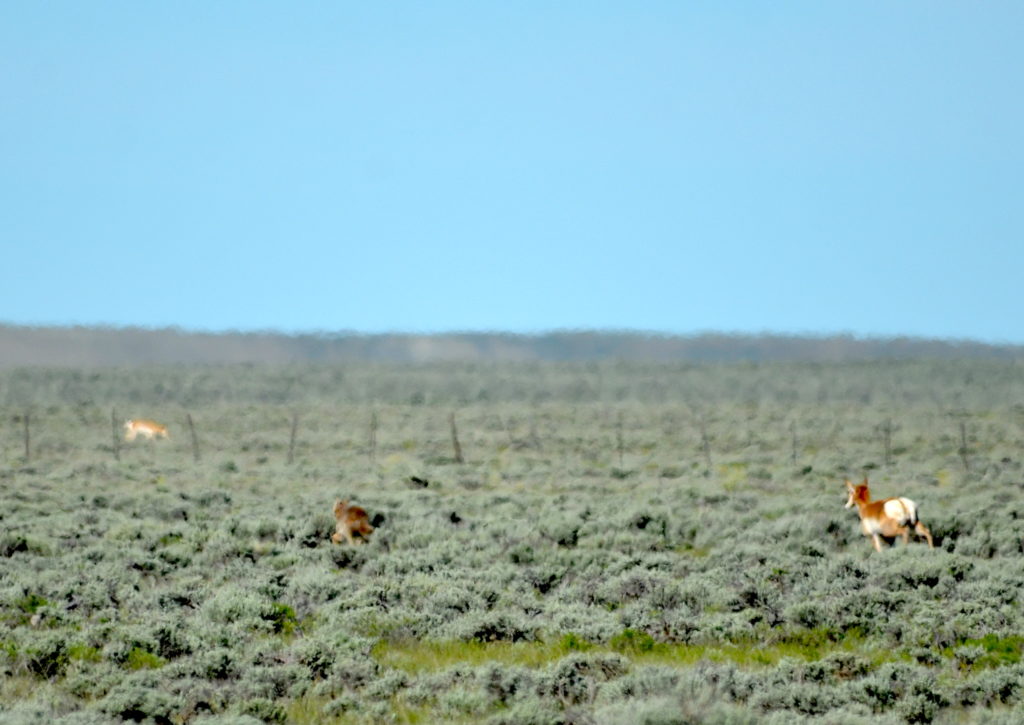By Cat Urbigkit, Range Writing columnist for Cowboy State Daily
What but the wolf’s tooth whittled so fine
The fleet limbs of the antelope?
What but fear winged the birds, and hunger
Jewelled with such eyes the great goshawk’s head?
Violence has been the sire of all the world’s values.
From: The Bloody Sire by Robinson Jeffers (1940s)
It’s been an interesting week on the ranch, which is located amid the sagebrush sea of western Wyoming. We had our first confirmed depredation of a 20-pound lamb by a pair of adult bald eagles. This was somewhat of a surprise since our livestock guardian dogs tend to harass big birds that come near the flock, and because most confirmed eagle depredations on livestock are inflicted by golden eagles – not bald eagles. I had watched a pair of golden eagles hunting over the sheep flock the week prior and was relieved when a spring snow squall pushed the eagles away from the flock.
While we were on watch to keep eagles away from the lambing flock, our game cameras revealed the presence of a radio-collared wolf making numerous forays onto the ranch, even coming within a short distance from the house. The cameras revealed our livestock guardian dogs tracking the wolf but returning to their sheep a few hours later. This male wolf was new to the neighborhood but is in addition to an adult female wolf we helped collar last December after numerous livestock depredations and removal of several members of her pack. That at least two collared wolves were roaming our lambing grounds along the Wind River Front is a concern akin to a ticking time bomb. There will be violence – the only uncertainty is when.
With everyone on high alert in trying to avert an animal catastrophe, the sheep are bedded on high ground each night about a half-mile from the house. I’m out as the sun starts rising to feed the guardian dogs and see the sheep off to their day’s grazing. We can generally tell by the behavior of the livestock guardian dogs whether there are wolves in the area. When the wolves are making their forays onto the ranch, the dogs are hyped up, driven by adrenaline, and looking for a fight. When the wolves aren’t around, the dogs are much more relaxed.

Spring seems to have come late to western Wyoming this year, but by the second week of June the pronghorn antelope that shares our range were dropping their fawns in all directions. It seemed nearly every predator we saw in the last few days had a fawn carcass in the grip of its jaws. Worried about the survival rate of these fawns, an event I witnessed gave me hope and reminded me of the Robinson Jeffers poem quoted above.
As I drove down the county road which splits our pastures, I watched a coyote cross from one pasture to another. A mixed group of pronghorn antelope does and bucks were in that pasture, and a doe immediately took to chasing the coyote. It wasn’t enough to chase it out of her immediate vicinity – the doe performed like a good cow horse, meeting every dodge and turn of the coyote with her own maneuvers, and coming so close to stomping the coyote into the dirt.
The doe chased the coyote over half a mile before it fled under the far boundary fence to safety. According to scientific literature, the doe’s anti-predatory defense isn’t unusual, and this aggression exhibited by a prey species toward a predator is nearly always undertaken by adult females. (I also found a great account of a pronghorn doe teaming up with a short-eared owl to harass a coyote away from an active owl nest.)

Generally as wolf densities increase, coyote densities decrease, but we have both species on the ranch, and know that both species prey on pronghorn antelope here. But many predators – from coyotes and wolves to eagles and bears – are successful at searching out newborn prey species that hide.
A study of grizzly bear depredation on elk calves in Yellowstone National Park found the most common hunting technique used by grizzlies was searching for bedded calves, with one bear catching five calves in 15 minutes. Like our pronghorn doe, cow elk will attack predacious bears, as do cow bison.
Research on white-tailed deer fawns in Minnesota found that all radio-tagged fawns in the study were killed by predators, with a near-even split between wolves and black bears.
The first two weeks of life are the most dangerous for newborn fawns and calves, but as each day passes, they grow and gain strength. By the time pronghorn fawns are two months old, they are outrunning predators nearly as ably as their protective mothers.
Cat Urbigkit is an author and rancher who lives on the range in Sublette County, Wyoming. Her column, Range Writing, appears weekly in Cowboy State Daily.





